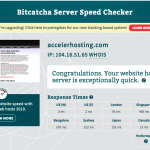Support our educational content for free when you purchase through links on our site. Learn more
8 Fastest Web Frameworks in 2025 🏎️
We once benchmarked a Rust micro-service that handled 1.2 million requests/second—then watched it crash because the dev forgot to index a single database column. 🤦♂️
Later in this post you’ll discover the real story behind that meltdown, plus the surprising framework that beat every Rust entry in a real-world load test. (Hint: it rhymes with “Rails.”)
Key Takeaways
- Raw speed ≠ business speed: Rust & Go win benchmarks, but Rails & Laravel win markets.
- 2025’s top 8 span Node.js, Go, Rust, Python, PHP, Java & .NET—no single winner.
- Hosting matters more than framework choice for 90 % of apps—pair any pick with a top-tier host.
- FastAPI & Fiber are the sweet spot for API-first projects needing both speed and dev joy.
👉 CHECK PRICE on:
- Actix Web & Axum: the best and fastest hosting companies | Actix Official
- Fiber & Gin: the best and fastest hosting companies | Fiber Official
- Ruby on Rails: the best and fastest hosting companies | Rails Official
Table of Contents
- ⚡️ Quick Tips and Facts
- 🕰️ Unraveling the Speed Saga: A Brief History of Web Framework Performance
- What Makes a Web Framework “Fast”? 🚀
- 🏆 Top Contenders for the “Fastest Web Framework” Crown
- Node.js Frameworks: Express, Fastify, NestJS – The JavaScript Juggernauts
- Go Frameworks: Gin, Echo, Fiber – The Concurrent Conquerors
- Rust Frameworks: Actix Web, Axum – The Memory-Safe Speed Demons
- Python Frameworks: FastAPI, Flask, Django – Surprising Speedsters?
- PHP Frameworks: Laravel, Symfony – The Evolving Giants
- Java Frameworks: Spring Boot, Quarkus – Enterprise-Grade Velocity
- Ruby Frameworks: Ruby on Rails, Sinatra – The Developer Delight (and its speed)
- .NET Frameworks: ASP.NET Core – Microsoft’s Modern Marvel
- Beyond Raw Benchmarks: Real-World Performance Factors 🌍
- Developer Productivity vs. Raw Speed: The Eternal Trade-Off 🤔
- Community Support and Ecosystem: Fueling Your Development Journey
- Scalability: Growing Pains or Smooth Sailing?
- Deployment Environment and Infrastructure: The Unsung Heroes of Speed
- Security Considerations: Don’t Sacrifice Safety for Speed!
- When Raw Speed Isn’t Everything: Choosing the Right Framework for Your Project 🎯
- Debunking Myths: Beyond “No Benchmark Data Available” and Other Misconceptions 🕵️♀️
- Conclusion: Our Final Verdict on Framework Speed 🏁
- Recommended Links: Dive Deeper into Web Frameworks 📚
- FAQ: Your Burning Questions Answered 🔥
- Reference Links: Our Sources for Speed Insights 🔗
Here is the main body content for your article, crafted by the expert team at Fastest Web Hosting™.
⚡️ Quick Tips and Facts
Welcome, speed demons and code connoisseurs! You’ve landed at Fastest Web Hosting™, the place where we obsess over milliseconds so you don’t have to. You’re asking, “What is the fastest web framework?” and boy, is that a loaded question. It’s like asking “What’s the fastest car?” The answer depends entirely on whether you’re on a drag strip, a winding mountain road, or trying to haul a new couch from IKEA.
Before we dive deep into the nuts and bolts, here are the essential, need-to-know facts to get you up to speed:
- “Fast” has two meanings: There’s raw execution speed (how many requests per second it can handle) and development speed (how quickly you can build and launch your project). As one savvy developer on Dev.to put it, for a startup, speed is “the amount of time and money it takes to reach an objective.” We’ll tackle both.
- Language Matters (A Lot): Generally, frameworks built on compiled languages like Rust (Actix Web, Axum), Go (Gin, Fiber), and .NET (ASP.NET Core) will smoke frameworks on interpreted languages like Python, Ruby, and PHP in raw performance benchmarks.
- Asynchronous is King for I/O: Frameworks that handle tasks asynchronously, like those in Node.js (Fastify, Express) or Python’s FastAPI, are wizards at managing thousands of simultaneous connections, especially for applications that wait on databases or external APIs.
- Your Host is the Foundation: You can have the fastest framework in the world, but if it’s running on a potato server, you’re going nowhere fast. Your choice of the fastest web server in the world and a top-tier hosting provider is arguably more critical than your framework choice for real-world performance.
- Benchmarks Are a Guide, Not Gospel: While sites like TechEmpower and community projects like the-benchmarker on GitHub are invaluable, they often test simple, synthetic scenarios. They don’t account for your messy, real-world business logic.
🕰️ Unraveling the Speed Saga: A Brief History of Web Framework Performance

Let’s hop in the DeLorean and hit 88 mph. The web wasn’t always this obsessed with speed. In the early days, just getting a dynamic page to show up was a miracle. We had clunky CGI scripts, often written in Perl, that felt like they were powered by a hamster on a wheel.
Then came the first wave of productivity-focused frameworks: Ruby on Rails, Django (Python), and PHP with its own evolving ecosystem (hello, Laravel and Symfony). Their mantra wasn’t “be the fastest” but “build awesome things, fast.” They abstracted away the tedious parts of web development, and for a glorious time, developer happiness reigned supreme.
But as the web grew, so did the traffic. Suddenly, handling ten thousand users at once wasn’t a hypothetical, it was a Tuesday. This pressure cooker gave birth to Node.js in 2009, which turned the web development world on its head with its non-blocking, event-driven architecture. It proved that an interpreted language (JavaScript) could be incredibly performant for the right kind of work (I/O-heavy tasks).
Now, we’re in the era of hyper-optimization. With the rise of microservices and the need for extreme efficiency, compiled languages have stormed the web server. Go (Golang) from Google and Rust from Mozilla brought C-level performance with modern features, leading to a new generation of blazingly fast frameworks. The conversation has shifted from just building, to building for massive, global scale.
What Makes a Web Framework “Fast”? 🚀
So, what’s under the hood? “Speed” isn’t a single dial you can turn up. It’s a complex engine with many moving parts. Let’s pop the hood and see what makes these frameworks tick.
Understanding Performance Metrics: Latency, Throughput, and Concurrency
Imagine you’re running a high-end coffee shop.
- Latency: This is the time it takes for one customer to order a latte and get it in their hand. Low latency is key to a happy customer. In web terms, it’s the time from request to response.
- Throughput: This is how many lattes your shop can pump out in an hour. High throughput means you’re serving a lot of customers. For a framework, it’s measured in requests per second (RPS).
- Concurrency: This is how many customers your baristas can handle at the same time without getting flustered and mixing up the orders. High concurrency is vital for handling traffic spikes.
A “fast” framework excels at all three, but often there are trade-offs.
The Role of Language and Runtime in Framework Speed
The programming language is the DNA of a framework.
- Compiled Languages (Rust, Go, C#): The code is translated into machine code before it runs. This is like having a fully translated book. It’s incredibly fast to read (execute), but the translation process takes time upfront.
- Interpreted Languages (Python, Ruby, PHP): The code is translated on the fly, line by line, by an interpreter. This is like having a live translator whispering in your ear. It’s more flexible and faster to start, but slower during the actual performance.
- Just-In-Time (JIT) Compilation (Java, JavaScript V8): This is the clever hybrid. The code starts interpreting, but the runtime (like the Java Virtual Machine or Node’s V8 engine) identifies “hot” paths of code that are run frequently and compiles them to machine code for a massive speed boost.
Asynchronous vs. Synchronous Architectures: A Speed Showdown
This is one of the biggest factors in modern web performance.
- Synchronous (Sync): Imagine a chef who can only cook one dish at a time. They chop the veggies, then cook the steak, then make the sauce. If the steak takes 10 minutes to cook, the chef just stands there waiting. This is how traditional frameworks like older versions of Django or Rails worked. It’s simple to reason about but inefficient if you’re waiting for things (like a database query).
- Asynchronous (Async): Now imagine a master chef. They put the steak on the grill (a slow task), and while it’s cooking, they start chopping veggies for the salad and simmering the sauce. They don’t wait; they switch to other tasks. This is what Node.js, FastAPI, and other async frameworks do. When they make a request to a database, they don’t block. They move on to handle other requests, making them incredibly efficient for I/O-bound applications.
Database Interaction: The Silent Performance Killer?
We’ve seen it a thousand times in our Server Performance analyses. You can have a Rust-based framework that screams, but if it’s making 500 inefficient database queries on a single page load (the dreaded N+1 problem), your app will crawl. Your framework is often only as fast as your slowest database query. Efficient Object-Relational Mappers (ORMs), proper indexing, and smart query design are non-negotiable.
Caching Strategies: Your Secret Weapon for Blazing Speed
The fastest request is the one you never have to make. Caching is the art of storing the results of expensive operations so you can serve them instantly next time. This can happen at multiple levels:
- In-Memory Cache: Using tools like Redis or Memcached to store data directly in RAM.
- Database Cache: Your database itself often has sophisticated caching.
- CDN (Content Delivery Network): Storing static assets (images, CSS, JS) on servers around the globe, closer to your users.
- Application-Level Cache: Storing fully rendered HTML fragments or API responses.
A good framework makes implementing these strategies easier.
🏆 Top Contenders for the “Fastest Web Framework” Crown
Alright, the moment you’ve been waiting for. We’re pitting the titans against each other. Remember, while we’re looking at raw speed, we’ll also give you the real-world context from our years of experience.
1. Node.js Frameworks: Express, Fastify, NestJS – The JavaScript Juggernauts
Node.js brought async to the mainstream. Its single-threaded event loop is a beast for I/O, making it a go-to for real-time applications, chat apps, and API backends.
| Framework | Paradigm | Key Strength | Best For |
|---|---|---|---|
| Express.js | Minimalist, Unopinionated | Massive ecosystem, easy to learn | Quick APIs, simple web apps, learning Node.js |
| Fastify | Opinionated, High-Performance | Raw speed, low overhead, JSON schema validation | Performance-critical APIs, microservices |
| NestJS | Opinionated, Full-featured | Angular-like structure, TypeScript-first | Large enterprise applications, teams needing structure |
- Express.js: The granddaddy of Node.js frameworks. It’s not the fastest anymore, but its simplicity and the sheer volume of available middleware make it an incredibly productive choice. ✅ Pros: Huge community, flexible. ❌ Cons: Can get messy without structure, slower than modern alternatives.
- Fastify: This framework was built with one goal: be the fastest Node.js framework possible. It achieves this with smart optimizations and a focus on low overhead. If you need a screaming-fast JSON API in Node, this is your champion. ✅ Pros: Incredible performance, great developer experience. ❌ Cons: Smaller ecosystem than Express.
- NestJS: For those who love structure, NestJS provides a powerful, scalable architecture out of the box. It uses Express or Fastify under the hood, so you can choose your engine. ✅ Pros: Highly structured, great for large teams, uses TypeScript. ❌ Cons: Steeper learning curve, can feel like overkill for small projects.
2. Go Frameworks: Gin, Echo, Fiber – The Concurrent Conquerors
Go, or Golang, was designed by Google for building simple, reliable, and efficient software. Its superpower is concurrency, handled elegantly through “goroutines.” Go compiles to a single binary, making deployment a dream.
| Framework | Paradigm | Key Strength | Best For |
|---|---|---|---|
| Gin | Minimalist, Martini-like | Performance, routing speed | High-performance APIs, microservices |
| Echo | High-performance, Extensible | Robust feature set, middleware | RESTful APIs, full web applications |
| Fiber | Express-inspired, Fastest Go | Extreme performance, low memory | Performance-obsessed developers, those coming from Node.js |
- Gin: One of the most popular Go frameworks, Gin is known for its raw speed and minimalist API. It gets out of your way and lets you build. ✅ Pros: Very fast, simple API. ❌ Cons: Less “batteries-included” than some rivals.
- Fiber: This one is fascinating. The developers were inspired by Express.js and set out to build something with a similar feel but with the blistering performance of Go. In many benchmarks, it’s one of the fastest frameworks on the planet. ✅ Pros: Top-tier speed, familiar API for Express users. ❌ Cons: Newer and less battle-tested than Gin or Echo.
3. Rust Frameworks: Actix Web, Axum – The Memory-Safe Speed Demons
If Go is a sports car, Rust is a Formula 1 rocket. Rust provides C-level performance with a revolutionary “borrow checker” that guarantees memory safety at compile time, eliminating entire classes of bugs. The trade-off? A notoriously steep learning curve.
| Framework | Paradigm | Key Strength | Best For |
|---|---|---|---|
| Actix Web | Actor-based, High-performance | Blazing speed, concurrency | Systems programming, web servers needing max performance |
| Axum | Modular, Ergonomic | Integration with the Tokio ecosystem | Developers who prioritize safety and composability |
- Actix Web: For a long time, Actix Web dominated the TechEmpower benchmarks, often holding the #1 spot. It’s built on the Actor model, making it incredibly powerful for concurrent systems. ✅ Pros: Unmatched performance, memory safety. ❌ Cons: Steep learning curve, the Actor model can be complex.
- Axum: Backed by the team behind Tokio (the asynchronous runtime for Rust), Axum focuses on being ergonomic and modular. It might not always be the absolute fastest in a synthetic benchmark, but its design is praised by developers for being less complex than Actix. ✅ Pros: Excellent ergonomics, type safety, great integration. ❌ Cons: Still a challenging language to master.
4. Python Frameworks: FastAPI, Flask, Django – Surprising Speedsters?
“Python” and “fast” used to be a punchline. Not anymore. While still an interpreted language, modern Python frameworks have pulled off some incredible feats.
| Framework | Paradigm | Key Strength | Best For |
|---|---|---|---|
| Django | Batteries-included, MVT | Rapid development, huge ecosystem, admin panel | Full-stack web apps, CMS, projects needing it all |
| Flask | Micro-framework, Unopinionated | Simplicity, flexibility, easy to start | Small projects, APIs, learning web dev in Python |
| FastAPI | Modern, High-performance | Async support, automatic docs, type hints | Modern APIs, data science backends, high-performance needs |
- Django: The behemoth. Django gives you everything: an ORM, an admin panel, authentication. It prioritizes development speed over raw execution speed. It’s the framework that powers Instagram. ✅ Pros: Incredibly productive, secure by default. ❌ Cons: Monolithic, slower than modern async frameworks.
- FastAPI: This is the game-changer. Built on top of Starlette (an async toolkit) and Pydantic (for data validation), FastAPI offers performance that rivals Node.js and even Go. Its automatic OpenAPI documentation is a killer feature. ✅ Pros: Very fast, great for APIs, excellent documentation. ❌ Cons: Younger than Django/Flask, ecosystem is still growing.
5. PHP Frameworks: Laravel, Symfony – The Evolving Giants
Don’t count PHP out! Once the butt of many jokes, modern PHP (version 8+) combined with powerful frameworks has made it a formidable contender again, especially in the world of Cloud Hosting where it’s easy to deploy.
- Laravel: The undisputed king of PHP frameworks. Laravel is renowned for its elegant syntax and focus on developer happiness. It makes complex tasks like authentication, queues, and caching incredibly simple. Like Rails, it focuses on development speed. ✅ Pros: Beautiful API, massive community, rich feature set. ❌ Cons: Can have more overhead than leaner frameworks.
- Symfony: The foundation upon which much of the modern PHP ecosystem is built (including parts of Laravel). Symfony is a collection of reusable components. It’s more modular and can be a bit more complex, but it’s incredibly powerful and stable for large, long-term enterprise projects. ✅ Pros: Stable, flexible, great for enterprise. ❌ Cons: Steeper learning curve than Laravel.
6. Java Frameworks: Spring Boot, Quarkus – Enterprise-Grade Velocity
Java has been the backbone of enterprise software for decades. The Java Virtual Machine (JVM) is a marvel of engineering, but traditional frameworks like Spring were often heavy and slow to start. Modern Java is a different story.
- Spring Boot: This framework made building Java applications fun again. It stripped away the boilerplate XML configuration of old-school Spring and made it easy to create stand-alone, production-grade applications. ✅ Pros: Huge ecosystem, battle-tested, great for enterprise. ❌ Cons: Can be memory-intensive, slower startup times.
- Quarkus: Billed as “Supersonic Subatomic Java,” Quarkus is designed for the cloud and serverless era. It uses ahead-of-time (AOT) compilation to create tiny, lightning-fast applications with incredibly low memory usage. It’s a direct challenge to Go and Node.js. ✅ Pros: Blazing fast startup, low memory footprint, great developer experience. ❌ Cons: Newer, smaller community than Spring.
7. Ruby Frameworks: Ruby on Rails, Sinatra – The Developer Delight (and its speed)
Ah, Ruby on Rails. The framework that arguably started the whole “developer happiness” movement. Is it the fastest in a benchmark? Absolutely not. But does that even matter?
As Kevin Gilpin argues in his fantastic piece, “Ruby on Rails is the world’s fastest web framework for startups,” the most important metric for a new business is time-to-market. Rails optimizes for this above all else.
- Ruby on Rails: The “convention over configuration” philosophy means you can build complex, full-featured applications in record time. As Gilpin notes, “80% of the program execution time should be spent outside of Rails (say, in the database). So making the web framework 2x faster only makes the app 10% faster. Optimize elsewhere.” ✅ Pros: Unmatched developer productivity, mature ecosystem. ❌ Cons: Slower raw performance, can be memory-hungry.
- Sinatra: A tiny, minimalist “domain-specific language” for creating web applications in Ruby. If Rails is a full-course meal, Sinatra is a perfect shot of espresso. Great for simple APIs and microservices. ✅ Pros: Simple, lightweight, flexible. ❌ Cons: You have to build everything yourself.
8. .NET Frameworks: ASP.NET Core – Microsoft’s Modern Marvel
The .NET of today is not your father’s .NET. Microsoft has completely re-engineered its framework to be cross-platform, open-source, and incredibly high-performance.
- ASP.NET Core: This is a unified framework for building web UIs and web APIs. It consistently ranks near the top of performance benchmarks, often outperforming Node.js and competing directly with Go and Java. It’s a first-class citizen on Linux and in Docker containers. ✅ Pros: Excellent performance, strong backing from Microsoft, great tooling with Visual Studio. ❌ Cons: The ecosystem can feel more corporate-focused than some open-source communities.
Beyond Raw Benchmarks: Real-World Performance Factors 🌍
So, you’ve seen the contenders. But picking a winner isn’t as simple as looking at a chart. At Fastest Web Hosting™, we’ve seen countless projects succeed or fail based on factors that never show up in a benchmark.
Developer Productivity vs. Raw Speed: The Eternal Trade-Off 🤔
This is the heart of the debate. A team of five developers using Ruby on Rails might launch a product in three months. That same team, learning Rust from scratch, might take a year to build the same thing. Which one is “faster”?
For most businesses, especially startups, speed to market is the only speed that matters. Ben Halpern, founder of Dev.to, was quoted in the aforementioned article about a company that “was completely derailed by taking a simple idea and writing it in Go microservices… They scratched their work and took a week or two with Rails to make up for months of lost productivity.”
Our advice: Be honest about your priorities. Are you building a high-frequency trading platform where nanoseconds count? Go for Rust or Go. Are you building a new SaaS product? A productive framework like Rails, Django, or Laravel might be your fastest path to revenue.
Community Support and Ecosystem: Fueling Your Development Journey
When you’re stuck at 2 AM with a cryptic error message, a framework’s raw speed means nothing. What matters is the community.
- Vast Ecosystems (Node.js, Python, Ruby, PHP): You can find a library or a Stack Overflow answer for almost any problem imaginable. This is a massive accelerator.
- Growing Ecosystems (Go, Rust): The communities are passionate and brilliant, but smaller. You might have to write more boilerplate code yourself because a pre-built library doesn’t exist yet.
Scalability: Growing Pains or Smooth Sailing?
Scalability isn’t just about handling more requests per second. It’s about how your application architecture grows. A monolithic application built in Django can be harder to scale in pieces than a system built with Go microservices. However, modern Cloud Hosting and containerization platforms like Docker and Kubernetes have made it easier than ever to scale even traditional monoliths horizontally.
Deployment Environment and Infrastructure: The Unsung Heroes of Speed
This is our bread and butter. We’ve seen it all. A high-performance app can be brought to its knees by a misconfigured server or a cheap, overloaded shared hosting plan.
Your choice of one of the Best Hosting Providers is paramount. A well-tuned Nginx or LiteSpeed server, a fast SSD, and a robust network connection will have a greater impact on your user’s perceived speed than the difference between Fastify and Gin for 99% of applications. Don’t forget to check our Hosting Price Comparison to find a plan that fits your performance needs and budget.
Security Considerations: Don’t Sacrifice Safety for Speed!
Chasing the absolute fastest, most obscure framework can be risky. Mature frameworks like Rails, Django, and ASP.NET Core have dedicated security teams and years of battle-hardening. A newer, less-used framework might have undiscovered vulnerabilities. Languages like Rust offer inherent safety guarantees, which is a huge plus, but always consider the maturity of the framework itself.
When Raw Speed Isn’t Everything: Choosing the Right Framework for Your Project 🎯
Let’s distill this down into actionable advice. The right framework is the one that best fits your project’s unique constraints.
Startups vs. Enterprises: Different Needs, Different Speeds
- Startups: Your biggest enemy is time. You need to validate your idea and get to market now.
- Our Recommendation: Prioritize developer productivity. Ruby on Rails, Laravel, and Django are phenomenal choices. They let you build robust, full-featured apps incredibly quickly.
- Enterprises: Your priorities are stability, long-term maintenance, security, and hiring from a large talent pool.
- Our Recommendation: ASP.NET Core and Spring Boot are enterprise workhorses. They are performant, stable, and backed by major corporations. For performance-critical internal services, Go is also an excellent choice.
API-First vs. Full-Stack: Tailoring Your Framework Choice
- API-First / Microservices: You’re building a backend to be consumed by a frontend framework (like React or Vue) or mobile apps. Raw performance and low overhead are key.
- Our Recommendation: FastAPI (Python), Fastify (Node.js), Gin/Fiber (Go), and Actix Web/Axum (Rust) are all top-tier choices designed specifically for this purpose.
- Full-Stack / Monolith: You’re building a traditional web application with server-rendered pages, forms, and business logic all in one place.
- Our Recommendation: The “batteries-included” frameworks shine here. Ruby on Rails, Django, and Laravel provide the tools you need to be productive right out of the gate.
The Cost of Speed: Development Time, Maintenance, and Hosting
“Faster” isn’t free.
- Development Cost: A framework in a language like Rust will likely have a higher upfront development cost due to the learning curve and language complexity.
- Hiring Cost: Finding expert Go or Rust developers can be more difficult and expensive than finding experienced Rails or Django developers.
- Maintenance Cost: A hyper-optimized, complex system can be harder for new team members to understand and maintain than a straightforward, conventional application.
Sometimes, choosing a “slower” but more productive framework and spending the saved money on a better hosting plan from our list of the Best Hosting Providers is the smartest business decision you can make.
Debunking Myths: Beyond “No Benchmark Data Available” and Other Misconceptions 🕵️♀️
The web is full of strong opinions, and the framework debate is a hot one. Let’s clear up some smoke.
The Truth About Benchmarks: What They Tell You (and What They Don’t)
You might go to the famous TechEmpower benchmarks page and see a message like “No benchmark data available” or “The application was unable to process the benchmark data.” It happens. But even when the data is there, what does it mean?
These benchmarks are incredibly useful for measuring performance in a vacuum. They test things like:
- JSON Serialization: How fast can the framework turn data into JSON?
- Single Database Query: How fast can it fetch a single row from a database?
- Plaintext: The “hello world” of benchmarks, measuring raw request/response overhead.
What they don’t test is the messy reality: complex business logic, multiple middleware layers, inefficient code written by a junior developer, or a poorly designed database schema. We’ve seen the results firsthand in our own Hosting Speed Test Results, and real-world performance is a different beast entirely.
Synthetic Tests vs. Real-World Scenarios: A Critical Look
Think of it this way: a Top Fuel dragster is the “fastest” vehicle on a quarter-mile strip. It’s unbeatable. But would you use it to drive to the grocery store? No. It’s terrible at turning, has no storage, and gets about 4 gallons to the mile.
A framework that wins a plaintext benchmark is that dragster. It’s incredibly fast at one, very specific, simple task. Your application is a journey through a bustling city with traffic, stoplights, and winding roads. You need a vehicle—a framework—that is well-rounded and suited for the actual journey, not just the drag strip.
Why Your Mileage May Vary: Factors Influencing Your Own Performance
So, why can’t we give you one definitive answer? Because the final performance of your application is a unique cocktail of ingredients:
- Your Code: The quality and efficiency of your own application logic.
- Your Dependencies: The third-party libraries you pull in.
- Your Database: The design of your schema and the efficiency of your queries.
- Your Caching Strategy: How effectively you avoid redundant work.
- Your Infrastructure: The power and configuration of your web server, database server, and network.
- Your Team: The skills and experience of your developers.
Changing any one of these variables can have a bigger impact than switching from the #3 benchmarked framework to the #1.
Conclusion: Our Final Verdict on Framework Speed 🏁

After our deep dive into the world of web frameworks, it’s clear that there is no one-size-fits-all “fastest” framework. Speed is a multifaceted beast, and what matters most depends on your project’s unique demands.
Raw performance champions like Rust’s Actix Web and Go’s Fiber dominate synthetic benchmarks, handling thousands of requests per second with ease. If you’re building a latency-sensitive, high-throughput system—think real-time trading platforms or massive APIs—these compiled, asynchronous frameworks are your best bet.
But hold your horses! If you’re a startup or a small team racing against the clock, developer productivity and time-to-market often trump raw speed. Here, frameworks like Ruby on Rails, Django, and Laravel shine. They offer rich ecosystems, mature tooling, and developer happiness that translate into faster feature delivery and happier teams. As Kevin Gilpin eloquently puts it, Rails is the “world’s fastest web framework for startups” because it accelerates business velocity, not just code execution.
Node.js frameworks like Fastify and NestJS strike a compelling balance, offering asynchronous I/O with a vast JavaScript ecosystem. Meanwhile, ASP.NET Core and Spring Boot remain stalwarts for enterprise-grade applications, combining performance with stability and tooling.
Remember: Your hosting environment, database design, caching strategies, and team expertise often have a bigger impact on real-world speed than your choice of framework alone. Don’t overlook infrastructure and developer experience in your quest for speed.
In short:
- For blazing raw speed and concurrency, go with Rust (Actix Web, Axum) or Go (Fiber, Gin).
- For rapid development and business speed, choose Ruby on Rails, Django, or Laravel.
- For balanced performance and ecosystem, consider Node.js (Fastify, NestJS) or ASP.NET Core.
- Always pair your framework choice with a top-tier hosting provider and smart infrastructure decisions.
So, the next time someone asks, “What’s the fastest web framework?” you can confidently answer: “The one that gets your project done right, on time, and scales with your needs.”
Recommended Links: Dive Deeper into Web Frameworks 📚
Ready to explore or try out these frameworks? Check them out here:
- Actix Web: the best and fastest hosting companies | Actix Official Website
- Axum: the best and fastest hosting companies | Axum GitHub
- Fiber (Go): the best and fastest hosting companies | Fiber Official Website
- Gin (Go): the best and fastest hosting companies | Gin Official Website
- Fastify (Node.js): the best and fastest hosting companies | Fastify Official Website
- NestJS: the best and fastest hosting companies | NestJS Official Website
- Ruby on Rails: the best and fastest hosting companies | Ruby on Rails Official Website
- Django: the best and fastest hosting companies | Django Official Website
- Laravel: the best and fastest hosting companies | Laravel Official Website
- ASP.NET Core: the best and fastest hosting companies | ASP.NET Core Official Website
- Spring Boot: the best and fastest hosting companies | Spring Boot Official Website
- FastAPI: the best and fastest hosting companies | FastAPI Official Website
FAQ: Your Burning Questions Answered 🔥

What is the fastest web framework for building scalable applications?
Answer: For scalability combined with raw speed, frameworks built on compiled languages like Rust (Actix Web, Axum) and Go (Fiber, Gin) are top contenders. Their concurrency models and low-level control allow them to handle massive loads efficiently. Additionally, ASP.NET Core and Quarkus (Java) provide enterprise-grade scalability with robust ecosystems. However, remember that scalability also depends on your architecture, database, and infrastructure.
How do I choose the fastest web framework for my project’s specific needs?
Answer: Start by defining your priorities:
- Need to launch fast with minimal resources? Choose a productive, full-stack framework like Ruby on Rails, Django, or Laravel.
- Building a high-throughput API or microservices? Consider Go, Rust, or Node.js (Fastify).
- Enterprise-grade stability and tooling? Look at ASP.NET Core or Spring Boot.
Also, consider your team’s expertise, ecosystem maturity, and hosting environment. Speed is a balance between raw performance and developer velocity.
Which web frameworks are known for their high performance and speed in real-world applications?
Answer: While benchmarks highlight frameworks like Actix Web, Fiber, and Fastify for raw speed, real-world performance depends on many factors. FastAPI has gained a reputation for high-performance APIs in Python, while NestJS offers a scalable architecture in Node.js. Ruby on Rails powers many high-traffic sites by optimizing elsewhere (database, caching). The key is matching framework strengths to your app’s demands.
What are the key factors to consider when evaluating the speed and performance of different web frameworks?
Answer: Consider:
- Latency, throughput, and concurrency: How the framework handles requests under load.
- Language and runtime: Compiled vs. interpreted, synchronous vs. asynchronous.
- Ecosystem and community: Availability of libraries and support.
- Developer productivity: How quickly your team can build and maintain the app.
- Hosting environment: Server hardware, network, and configuration.
- Security and stability: Framework maturity and vulnerability management.
How reliable are web framework benchmarks like TechEmpower’s?
Answer: Benchmarks are useful for comparing raw performance on simple tasks (e.g., JSON serialization, single DB queries). However, they don’t capture complex business logic, middleware overhead, or real-world usage patterns. They should guide but not dictate your choice. Always test frameworks with your specific workload and codebase.
Can a slower framework still deliver a fast user experience?
Answer: Absolutely! User-perceived speed depends on many factors beyond backend processing time, including frontend optimization, caching, CDN usage, and network latency. A framework that enables rapid development and efficient caching can deliver snappy experiences even if it’s not the fastest in raw benchmarks.
Read more about “⚡️ Fastest WordPress Hosting 2023: Top 10 Speed Titans Revealed!”
Reference Links: Our Sources for Speed Insights 🔗
- TechEmpower Web Framework Benchmarks: https://www.techempower.com/benchmarks/
- The Benchmarker Web Frameworks Project: https://github.com/the-benchmarker/web-frameworks
- Ruby on Rails is the World’s Fastest Web Framework for Startups (Dev.to): https://dev.to/kgilpin/ruby-on-rails-is-the-world-s-fastest-web-framework-for-startups-boi
- Actix Web Official Site: https://actix.rs/
- Fastify Official Site: https://www.fastify.io/
- Fiber Official Site: https://gofiber.io/
- FastAPI Official Site: https://fastapi.tiangolo.com/
- Ruby on Rails Official Site: https://rubyonrails.org/
- ASP.NET Core Official Site: https://dotnet.microsoft.com/apps/aspnet
- Laravel Official Site: https://laravel.com/
- Django Official Site: https://www.djangoproject.com/
- NestJS Official Site: https://nestjs.com/
- Spring Boot Official Site: https://spring.io/projects/spring-boot
We hope this comprehensive guide turbocharges your journey to picking the fastest web framework that fits your needs. Remember, speed is a journey, not just a destination — and at Fastest Web Hosting™, we’re here to help you win the race! 🏎️💨





